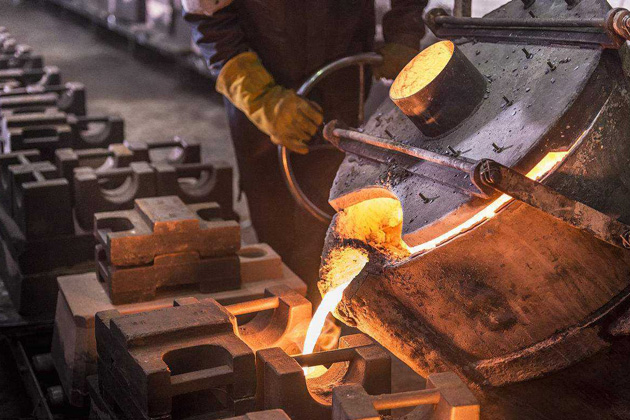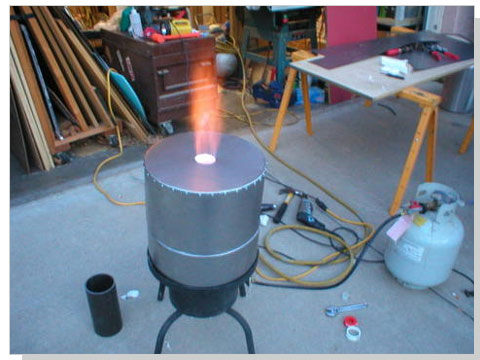Discover the Cutting-edge Strategies Used in a Metal Foundry for Superior Casting Results
In today's competitive manufacturing landscape, metal foundries are increasingly taking on ingenious methods to boost casting results - Metal Casting. Advanced computer simulations enable exact modeling of liquified metal habits, while 3D printing enables rapid manufacturing of complex molds. Additionally, environmentally friendly materials and automation enhance procedures. These developments assure considerable improvements in performance and quality assurance. Nonetheless, the impact of these technologies on sustainability and production methods remains to be fully checked out
Advanced Computer System Simulations in Metal Casting
Advanced computer simulations have revolutionized the metal casting process by enhancing precision and effectiveness. These innovative tools enable designers to create virtual designs of actors elements, enabling them to analyze and forecast the behavior of liquified metal during the spreading phase. By mimicing various specifications such as temperature, circulation price, and air conditioning prices, producers can determine possible problems prior to physical manufacturing begins.
This proactive method lowers waste and minimizes pricey errors, inevitably bring about boosted item high quality. In addition, simulations assist in the optimization of mold designs, making sure that they fulfill the certain requirements of each task. The integration of computational fluid characteristics (CFD) and finite component evaluation (FEA) more adds to the precision of these simulations, supplying insights that were formerly unattainable. Therefore, advanced computer simulations have become an important component of contemporary metal foundries, substantially progressing the market's capacities.
3D Printing for Mold And Mildews and Patterns
3D printing has arised as a groundbreaking technique for creating molds and patterns in the metal foundry market. This modern technology enables the fast production of intricate geometries that standard manufacturing techniques battle to accomplish. By utilizing additive manufacturing, foundries can develop elaborate designs with reduced lead times and product waste. The capacity to produce mold and mildews on demand enables better flexibility in style iterations, facilitating faster prototyping and adjustments.
3D printing can make use of a selection of products, consisting of plastics and steels, tailored to certain casting demands. This versatility boosts the accuracy of mold and mildews, leading to remarkable casting results with enhanced surface area coatings. In addition, the reduction in the number of parts called for streamlines setting up procedures, better optimizing manufacturing effectiveness. As foundries proceed to take on 3D printing, they are poised to redefine sector standards, paving the means for advancement and enhanced productivity in metal casting operations.
Eco-Friendly Products and Processes
As the metal foundry sector deals with increasing pressure to minimize its ecological footprint, the fostering of green materials and processes has actually come to be important. Factories are now discovering lasting options to standard materials, such as utilizing bio-based binders and recycled metals. These materials not only reduce waste yet additionally reduced power intake throughout manufacturing.
Additionally, developments in sand spreading strategies have actually caused the usage of synthetic sands that are much less harmful to the atmosphere. Foundries are additionally executing cutting-edge procedures like molten metal treatment that lowers exhausts and boosts the top quality of cast items.
Water-based coatings have changed harmful solvents, promoting a safer job atmosphere. By incorporating these eco-friendly practices, metal foundries can significantly reduce their ecological influence while preserving high-quality spreading outcomes. This change not only profits the environment resource but also aligns with the expanding customer need for lasting production solutions
Automation and Robotics in Foundry Workflow
While the metal foundry sector accepts advancement, the assimilation of automation and robotics is changing procedures significantly. Automated systems improve procedures such as mold making, metal putting, and casting completing, considerably enhancing efficiency. Robotics promote the handling of hefty products, reducing the threat of workplace injuries and guaranteeing more secure settings.

Further, using automated assisted automobiles (AGVs) maximizes material transportation within facilities, making sure timely shipment of parts to ideal workstations. By carrying out these modern technologies, foundries can adjust to fluctuating needs with better you can find out more agility, eventually bring about boosted profitability and competitiveness in the marketplace. As automation and robotics continue to advance, they hold the potential to redefine typical foundry techniques and drive more advancements in casting methods.
Real-Time Tracking and High Quality Control Techniques
The developments in automation and robotics have actually paved the way for more innovative strategies to top quality assurance in metal foundries. Real-time monitoring systems make use of sophisticated sensing units and data analytics to track vital criteria throughout the casting procedure. These systems continuously analyze variables such as product, pressure, and temperature structure, making it possible for immediate detection of deviations from developed criteria.
Quality control techniques now integrate artificial intelligence algorithms that examine historic information to predict prospective issues prior to they take place. This positive strategy reduces waste and improves general manufacturing performance. In addition, integrated comments loops enable rapid modifications, making sure that each spreading meets strict high quality requirements.
The implementation of digital doubles-- online replicas of physical assets-- has actually additionally revolutionized high quality assurance, permitting designers to mimic and enhance processes in real-time. Together, these cutting-edge techniques considerably improve the integrity and high quality of spreadings, go right here setting new sector criteria in metal foundry operations.
Frequently Asked Concerns
What Sorts of Metals Are Typically Cast in Shops?
Commonly cast steels in foundries include light weight aluminum, bronze, iron, and brass. Each metal exhibits distinct homes, making them appropriate for numerous applications, such as vehicle parts, machinery, and creative sculptures, boosting their flexibility in production.

Exactly how Long Does the Casting Refine Generally Take?
The spreading procedure commonly takes several hours to days, depending on elements such as the intricacy of the mold, type of metal made use of, and air conditioning demands. Each phase influences the overall duration substantially.
What Safety and security Procedures Are in Place for Foundry Workers?

How Are Flaws in Castings Identified and Addressed?
Flaws in castings are determined through aesthetic assessments and non-destructive testing approaches. When discovered, foundry employees address them by fine-tuning procedures, readjusting material structures, and applying restorative measures to guarantee high quality and compliance with criteria.
What Is the Expense Range for Metal Casting Providers?
The expense array for metal spreading services usually ranges $1 to $10 per extra pound, depending on variables such as product type, intricacy of the style, and manufacturing quantity, affecting general prices substantially.
In today's competitive production landscape, metal foundries are progressively embracing ingenious techniques to improve spreading outcomes. As the metal foundry industry deals with raising stress to minimize its environmental impact, the adoption of eco-friendly materials and procedures has become necessary. Foundries are currently checking out lasting alternatives to standard products, such as using recycled steels and bio-based binders. By integrating these environmentally friendly techniques, metal foundries can considerably reduce their ecological effect while maintaining top notch spreading results. The improvements in automation and robotics have paved the means for extra sophisticated approaches to quality assurance in metal foundries.